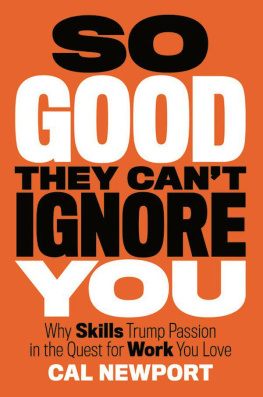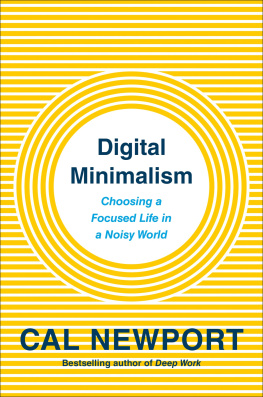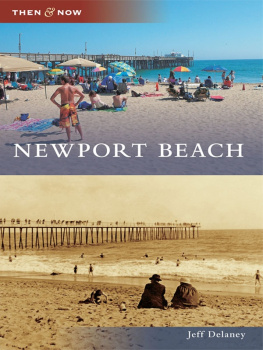
In accordance with the U.S. Copyright Act of 1976, the scanning, uploading, and electronic sharing of any part of this book without the permission of the publisher constitute unlawful piracy and theft of the authors intellectual property. If you would like to use material from the book (other than for review purposes), prior written permission must be obtained by contacting the publisher at permissions@hbgusa.com. Thank you for your support of the authors rights.
To Julie
The Passion of the Monk
Follow your passion is dangerous advice.
Thomas had this realization in one of the last places you might expect. He was walking a trail through the oak forest that outlines the southern bowl of Tremper Mountain. The trail was one of many that cross through the 230-acre property of the Zen Mountain Monastery, which has called this corner of the Catskill Mountains its home since the early 1980s. Thomas was halfway through a two-year stay at the monastery, where he was a practicing lay monk. His arrival, one year earlier, had been the fulfillment of a dream-job fantasy that he had nurtured for years. He had followed his passion for all things Zen into this secluded Catskills retreat and had expected happiness in return. As he stood in the oak forest that afternoon, however, he began to cry, his fantasy crumbling around him.
I was always asking, Whats the meaning of life? Thomas told me when I first met him, at a coffee shop in Cambridge, Massachusetts. By then, several years had passed since Thomass realization in the Catskills, but the path that led him to that point remained clear and he was eager to talk about it, as if the recounting would help exorcise the demons of his complicated past.
After earning a pair of bachelors degrees in philosophy and theology, then a masters degree in comparative religion, Thomas decided that Zen Buddhist practice was the key to a meaningful life. There was such a big crossover between the philosophy I was studying and Buddhism that I thought, Let me just go practice Buddhism directly to answer these big questions, he told me.
After graduation, however, Thomas needed money, so he took on a variety of jobs. He spent a year, for example, teaching English in Gumi, an industrial town in central South Korea. To many, life in East Asia might sound romantic, but this exoticism soon wore off for Thomas. Every Friday night, after work, the men would gather at these street carts, which had tents extending out from them, Thomas told me. They gathered to drink soju [a distilled rice liquor] late into the night. During winter there would be steam coming from these tents, from all the men drinking. What I remember most, however, is that the next morning the streets would be covered in dry vomit.
Thomass search also inspired him to travel across China and into Tibet, and to spend time in South Africa, among other journeys, before ending up in London working a rather dull job in data entry. Throughout this period, Thomas nurtured his conviction that Buddhism held the key to his happiness. Over time, this daydream evolved into the idea of him living as a monk. I had built up such an incredible fantasy about Zen practice and living in a Zen monastery, he explained to me. It came to represent my dream come true. All other work paled in comparison to this fantasy. He was dedicated to following his passion.
It was while in London that Thomas first learned about the Zen Mountain Monastery, and he was immediately attracted to its seriousness. These people were practicing really intense and sincere Zen, he recalls. His passion insisted that the Zen Mountain Monastery was where he belonged.
It took nine months for Thomas to complete the application process. When he finally arrived at Kennedy airport, having been approved to come live and practice at the monastery, he boarded a bus to take him into the Catskill countryside. The ride took three hours. After leaving the city sprawl, the bus proceeded through a series of quaint towns, with the scenery getting progressively more beautiful. In a scene of almost contrived symbolism, the bus eventually reached the foot of Tremper Mountain, where it stopped and let Thomas out at a crossroads. He walked from the bus stop down the road leading to the monastery entrance, which was guarded by a pair of wrought-iron gates, left open for new arrivals.
Once on the grounds, Thomas approached the main building, a four-story converted church constructed from local bluestone and timbered with local oak. It is as if the mountain offered itself as a dwelling place for spiritual practice is how the monks of the monastery describe it in their official literature. Pushing past the oaken double doors, Thomas was greeted by a monk who had been tasked with welcoming newcomers. Struggling to describe the emotions of this experience, Thomas finally managed to explain it to me as follows: It was like being really hungry, and you know that youre going to get this amazing mealthat is what this represented for me.
Thomass new life as a monk started well enough. He lived in a small cabin, set back in the woods from the main building. Early in his visit he asked a senior monk, who had been living in a similar cabin for over fifteen years, if he ever got tired of walking the trail connecting the residences to the main building. Im only just starting to learn it, the monk replied mindfully.
The days at the Zen Mountain Monastery started as early as 4:30 A.M. , depending on the time of year. Remaining in silence, the monks would greet the morning with forty to eighty minutes of meditation on mats arranged with geometric precision in the main hall. The view outside the Gothic windows at the front of the hall was spectacular, but the mats kept the meditators too low to see out. A pair of hall monitors sat at the back of the room, occasionally pacing among the mats. Thomas explained: If you found yourself falling asleep, you could request that they hit you with a stick they kept for this purpose.
After breakfast, eaten in the same great hall, everyone was assigned jobs. Thomas spent time cleaning toilets and shoveling ditches as part of his housecleaning duties, but he was also assigned, somewhat anachronistically, to handle the graphic design for the monasterys print journal. A typical day continued with more meditation, interviews with senior practitioners, and often long, inscrutable Dharma lectures. The monks were given a break each evening before dinner. Thomas often took advantage of this respite to light the woodstove in his cabin, preparing for the cold Catskill nights.
Thomass problems began with the koans. A koan, in the Zen tradition, is a word puzzle, often presented as a story or a question. Theyre meant to defy logical answers and therefore force you to access a more intuitive understanding of reality. In explaining the concept to me, Thomas gave the following example, which he had encountered early in his practice: Show me an immovable tree in a heavy wind.
I dont even know what an answer to that would look like, I protested.
In an interview, he explained, you have to answer right away, no thinking. If you pause like that, they kick you out of the room; the interview is over.
Okay, I would have been kicked out.
Heres the answer I gave to pass the koan, he said. I stood, like a tree, and waved my hands slightly as if in a wind. Right? The point was that this is a concept you really couldnt capture in words.
One of the first major hurdles a young practitioner faces in serious Zen practice is the Mu koan: Passing this koan is the first of the eight gates of Zen Buddhism. Until you reach this milestone, youre not yet considered a serious student of the practice. Thomas seemed reluctant to explain this koan to me. I had encountered this before in my research on Zen: Because these puzzles defy rationality, any attempt to describe them to a non-practitioner can be trivializing. Because of this I didnt press Thomas for details. Instead, I Googled it. Heres one translation I found:
Next page













